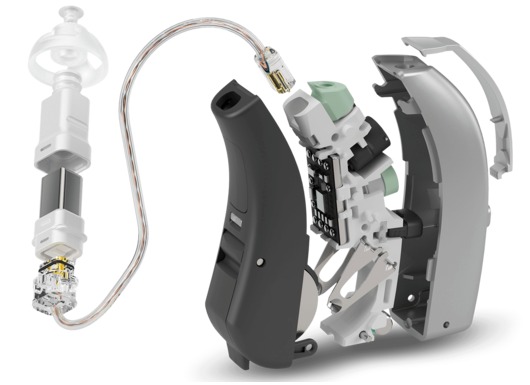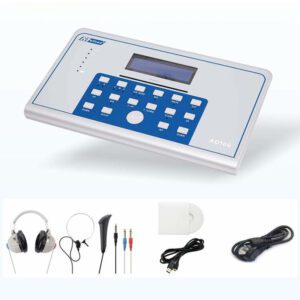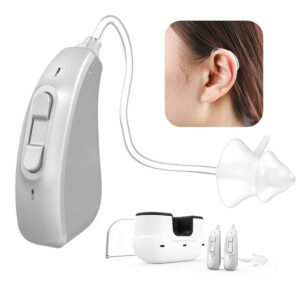hearing Aids play a critical role in improving the quality of life for individuals with hearing Loss. Understanding the key components of a hearing aid can help users make informed decisions about which device best suits their needs. Let’s explore the essential parts of a hearing aid and their functions.

Microphone (Microfono)
The microphone is one of the most crucial components of a hearing aid. It captures sound from the environment and converts it into electrical signals. These signals are then processed by the hearing aid to improve sound quality and make it more understandable for the user.
From my personal experience, the quality of the microphone plays a significant role in how well a hearing aid works in noisy environments. For example, users with high-frequency hearing loss often struggle to hear speech in crowded places, and a good microphone can help reduce background noise and focus on conversations.
Amplifier (Amplificador)
Once the microphone captures the sound, the amplifier increases the strength of the electrical signal. This process is essential because it ensures that the sound is loud enough for the user to hear clearly. Amplifiers come with different settings depending on the severity of hearing loss.
Having worked with various clients, I’ve observed that people with moderate to severe hearing loss often need a more powerful amplifier to hear conversations and sounds more clearly.
Receiver (Receptor)
The receiver is like the “speaker” of the hearing aid. After the sound is amplified, it is transmitted through the receiver into the ear. The receiver works closely with the amplifier to deliver a crisp, clear sound directly to the ear canal.
For some individuals, the receiver is the component that often requires replacement due to wear and tear. I recommend checking the receiver regularly to ensure optimal sound delivery.
Battery/Battery Compartment (Batería/Compartimento de la batería)
The battery powers the hearing aid and allows it to function throughout the day. Most hearing aids either use disposable batteries or come with rechargeable options. In my experience, rechargeable hearing aids are becoming more popular among users who prefer convenience and sustainability.
The battery compartment is where the power source is housed, and it’s important to ensure it is sealed properly to avoid moisture damage.
Shell (Carcasa)
The shell is the outer casing of the hearing aid, designed to protect the internal components. It’s made from durable materials like plastic or titanium to ensure that the device can withstand daily use. Depending on the style of the hearing aid (BTE, ITE, etc.), the shell may be custom-fitted to the user’s ear shape.
Ear Mold or Earbud (Audífono/Conector)
The ear mold or earbud is the part that fits inside the ear canal. It ensures the sound is directed precisely where it’s needed. The ear mold should be comfortable and secure. If it doesn’t fit well, it can affect the sound quality and comfort. I’ve seen many clients improve their comfort and sound quality simply by opting for a custom-fit ear mold.
Controller (Controlador)
Finally, the controller is the part of the hearing aid that lets the user adjust settings such as volume and tone. Modern hearing aids may have a digital interface or even Bluetooth functionality, allowing users to control their hearing aid through their smartphones.
How to Choose the Right Hearing Aid for Your Needs
When selecting a hearing aid, it’s essential to understand your specific needs and how each component will affect your hearing experience. For instance, individuals who spend a lot of time in noisy environments may benefit from a hearing aid with a high-quality microphone and a powerful amplifier. If you need more flexibility, a hearing aid with Bluetooth functionality may be a good option to explore.
Through years of assisting clients in finding the right devices, I’ve found that regular consultations with hearing specialists are key. The best advice always comes from professionals who can customize a solution based on your lifestyle and preferences.
A hearing aid is a complex device composed of several key parts that work together to improve the quality of life for those with hearing loss. By understanding the different components, users can make better decisions when choosing the right hearing aid for their needs. Regular maintenance and consultations with hearing care professionals are also essential to ensure your hearing aid remains effective for as long as possible.
Remember, whether it’s the microphone, amplifier, or receiver, each part of your hearing aid contributes to your hearing experience. Take the time to care for each part and seek advice when needed—your hearing is worth it!


